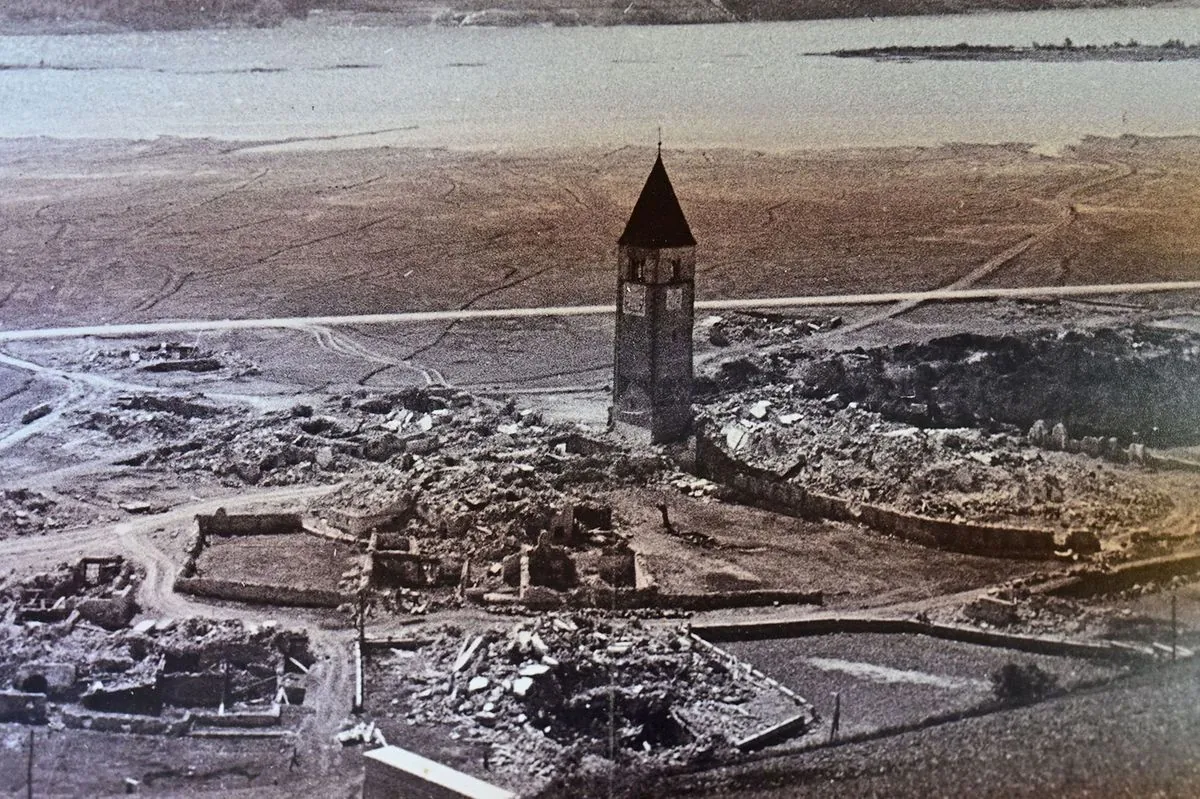Drought Unveils Submerged Greek Village, Signals Water Crisis in Athens
Severe drought exposes ruins of Kallio village in Lake Mornos, Athens' main water source. Greek authorities face critical water shortage, implementing conservation measures as climate change threatens future supply.

In a stark reminder of climate change's impact, the ruins of Kallio, a village submerged nearly five decades ago, have emerged from the receding waters of Lake Mornos in central Greece. This artificial reservoir, the largest of four supplying water to Athens, has reached its lowest levels in 16 years, raising concerns about the capital's future water security.
Lake Mornos, situated approximately 200 kilometers from Athens, currently holds about 335 million cubic meters of water, a significant drop from the 592 million cubic meters recorded in September 2022. This decline mirrors the overall water situation in Athens, where total reserves for the city's 3.6 million residents have plummeted from 1.13 billion cubic meters two years ago to 678 million cubic meters in early September 2024.
Costas Koutsoubas, deputy mayor of the surrounding Doris municipality, expresses concern about the prolonged drought:
"If the same weather pattern persists, if it doesn't rain enough and there's no snow, then next year we'll be talking about a dramatic situation. We need it to pour in buckets, night and day, for five days."
The Greek government has responded to the crisis by announcing plans to reopen existing boreholes north of Athens and draw water from a fallback reservoir. Additional measures include reducing network leaks, tapping rivers further afield, and recycling wastewater for irrigation and industrial use. Authorities have also advised Athenians to conserve water where possible.

Climate change has exacerbated the situation, with Greece experiencing dry winters and record-hot summers in recent years. This has contributed to destructive wildfires, including a recent blaze northeast of Athens that scorched an area nearly twice the size of Manhattan.
The drought's impact extends beyond the capital, affecting various parts of Greece. Some regions face cuts in drinking water supply, empty irrigation reservoirs, and drying boreholes. This water scarcity coincides with record numbers of foreign tourists visiting the country, further straining resources during peak summer months.
The emergence of Kallio's ruins serves as a poignant reminder of the sacrifices made for water security. Before its submersion in the late 1970s, Kallio boasted 60-70 homes and several water mills. Constantinos Gerodimos, a 90-year-old former resident, recalls the village's abundance:
"We were very upset to leave, it was a great village. We had lots of water, orchards with fruit trees, you name it. People from other villages would come here to get water."
As Greece grapples with this water crisis, the ghostly reappearance of Kallio serves as a stark warning about the consequences of climate change and the urgent need for sustainable water management practices.


































